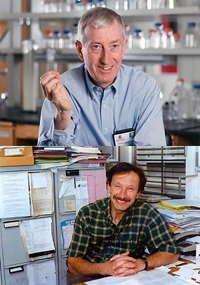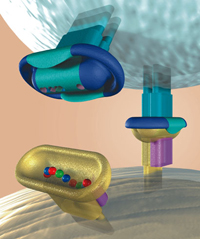
The year was 1973. From different corners of the globe came two scientists interested in how the body fights disease. Peter Doherty, a qualified vet from the University of Queensland, had completed a doctorate in Scotland and had returned to Australia. He had decided that he preferred to do research rather than be a practising vet. Rolf Zinkernagel, medically trained at the University of Basel in Switzerland, had just been given a scholarship to study in Australia.
Meeting in Canberra, the two men shared a lab at the John Curtin School of Medical Research, at the Australian National University. There, almost by accident, they came up with a discovery that was to change our understanding of the immune system – the body's internal defence force – and earn them the greatest scientific award of all, the Nobel Prize.
Today, medical researchers and doctors around the world regularly make use of their discovery – whether in designing vaccines, understanding AIDS and other virus diseases, or trying to unravel the mysteries of cancer. Both scientists have moved on to new research on the immune system, Peter Doherty in America and Rolf Zinkernagel back in Switzerland. But they came together again in Stockholm in December 1996 to receive the world's thanks in the form of the award from the Nobel Committee. And it all started 23 years ago in a
small lab in Canberra.

© 2025 Australian Academy of Science